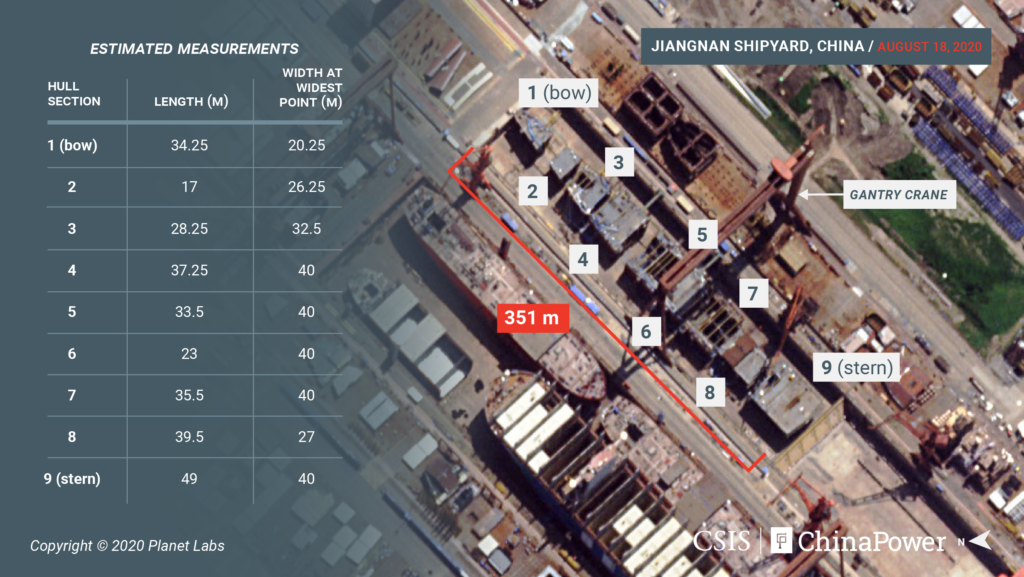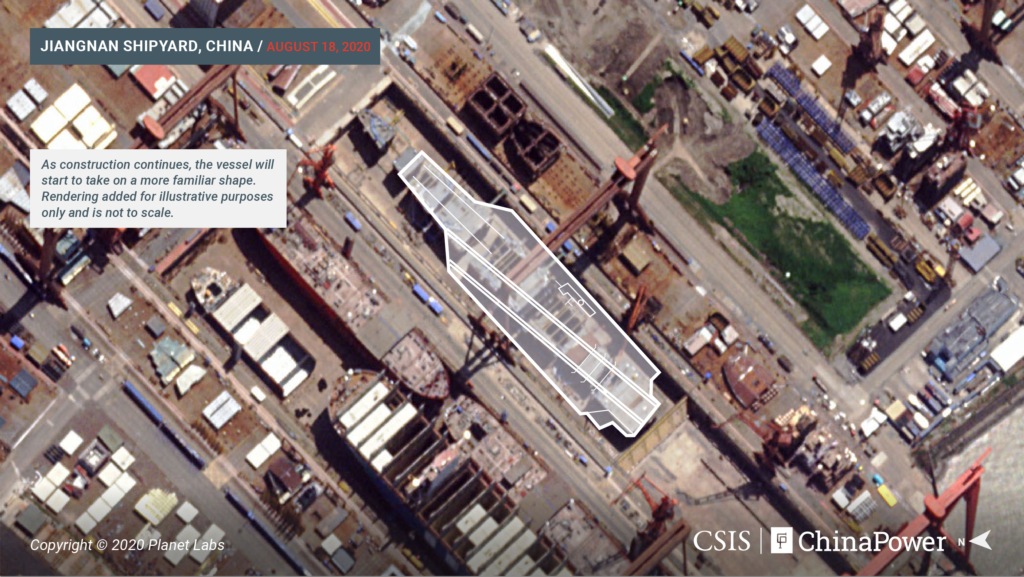China’s second indigenous aircraft carrier and the third in its fleet, the second Type 002’s construction details have surfaced over the internet via satellite images analysed by a Washington-based think tank.
Chinese PLA Soldiers Gearing-Up For Harsh ‘Ladakhi’ Winters As India-China Talks Hit The Wall
The ship would be the second of the Type 002 class, the reports suggest, after the recent indigenously-built aircraft carrier Shandong. These are based on the same Short Take-Off But Arrested Recovery (STOBAR) configuration, based on the Soviet Kuznetsov class aircraft carrier – the first of which was commissioned into the PLA Navy as Liaoning (Type-001).

According to the new findings, the satellite imagery, taken over Jiangnan Shipyard in Shanghai, China, on August 18, 2020, reveals the hull’s blocks laid out in order of construction.
“For the first time since construction began, the vessel’s hull blocks are laid out in order of construction and uncovered by environmental shelters, allowing the clearest view yet of the carrier,” the ChinaPower analysis detailed, noting that Type 002 was moved to a new location at the shipyard sometime between May 24 and June 2.
The revelations were published in the article “Tracking China’s Third Aircraft Carrier” via The China Power Project (ChinaPower) of the Center for Strategic and International Studies, and show the updates on the construction of the new carrier.

“ChinaPower has tracked military developments at Jiangnan Shipyard since late 2018, and originally identified the presumed build site of the third carrier in May 2019. Recent satellite imagery shows that the construction of the carrier has moved to a secondary location in Jiangnan.
While this relocation took place between May 24 and June 2, it was not until mid-August that satellite imagery provided a clear view of the vessel at its new location,” the article said. For the first time since construction began, the vessel’s hull blocks are laid out in order of construction and uncovered by environmental shelters, allowing the clearest view yet of the carrier,” it added.
The findings indicate that there are nine hull blocks spaced out on the dry dock. The blocks stretch roughly 351 meters from bow to stern (including the spaces between them). Excluding these spaces, the vessel’s visible hull blocks total roughly 297 meters in length. The longest block, which comprises the stern, is about 49 meters in length. In terms of width, the widest hull blocks measure approximately 40 meters.
The measurements of the nine hull blocks are generally consistent with what is expected for China’s third carrier. At roughly 297 meters, the combined length of the ship’s visible components is approaching the overall length of China’s first two aircraft carriers, the Liaoning (304.5 meters) and the Shandong (315 meters), it said.
The developments in Beijing’s carrier program indeed create an imbalance of power in the new world order, which has seen PLA-N’s rise as the largest navy in terms of surface ships, surpassing the US Navy in a recent report published by the Pentagon.
China’s vast trade relations give it an excuse for naval expansion to provide safe routes for commercial shipping, however, this also creates a new weapons proliferation in the Indo-Pacific.




